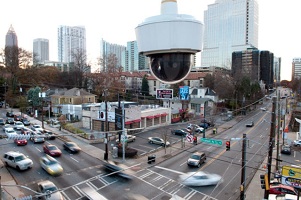According to the latest insight on the global market for city surveillance equipment from IHS Markit, the world market has registered robust growth in the past few years, surpassing $3 billion in 2017. IHS analysts predict that the global city surveillance market is forecast to grow at an average annual rate of 14.6 percent from 2016 to 2021
The research also found that the Chinese market for security equipment in city surveillance is the world’s largest, accounting for two-thirds of global revenue, and that China will become the first country to widely use facial recognition in city surveillance projects, with more than 10,000 smart cameras expected to be deployed in Shenzhen city in 2018. State capitals and major cities have been a sustainable growth engine for the rapid development of the city surveillance market in recent years. Driven by national policies, IHS expect state capitals to continue supporting growth of the city surveillance market in the coming years.
The primary focus of city surveillance systems is to help police forces maintain public safety and reduce crime. However, compared to other verticals, city surveillance systems typically cover much larger areas. As a result, these systems face significantly more complicated risks and technical issues than other application scenarios.
System complexity, scale and use cases vary widely, depending on how much budget a city has available to invest in this type of technology. Large events, such as the 2008 Beijing and 2012 London Olympics and the Expo 2010 Shanghai, led to sizeable investment and spurred major development of surveillance systems in those cities. If city budget cuts become necessary, reducing the size and sophistication of a surveillance project — or delaying installation — is often the action taken.
Jacky Zhang, analyst, video surveillance at IHS, suggests that provided sufficient funding for city surveillance projects is made available, many advanced technologies can be deployed to aid the effectiveness of a deployment. For instance, the market has witnessed rapidly growing demand for video content analysis in city surveillance projects, especially facial recognition. In addition to developments in video content analysis, body-worn cameras and services for law enforcement are also increasing the market base for city surveillance equipment. Body-worn cameras expand the monitoring coverage and capability of police forces beyond police in-car video. In addition, body-worn cameras can observe interactions between the officer and offenders or members of the public, offering a more reliable guarantee of procedural justice








